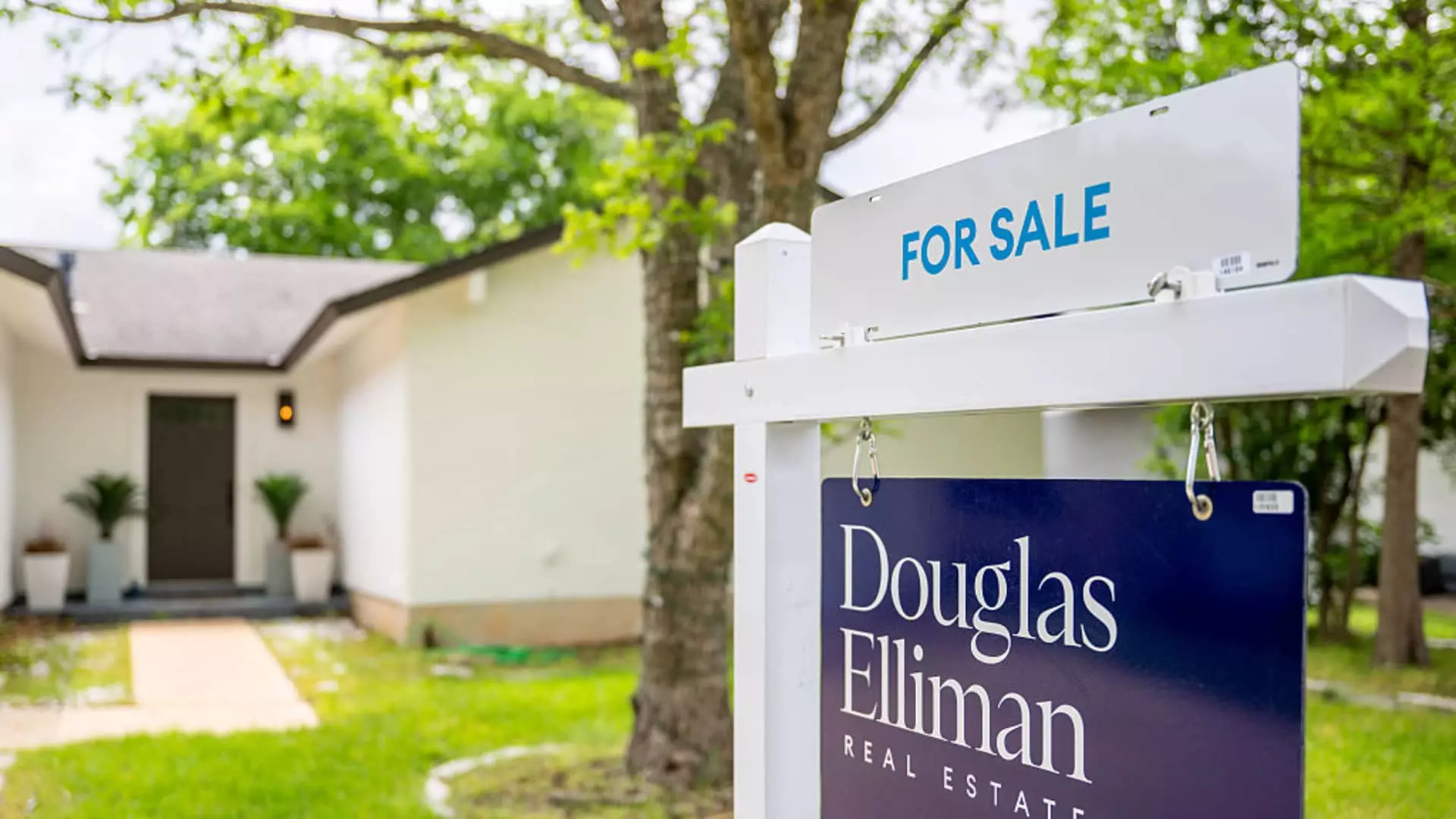The real estate market appears to be caught in a stagnant quagmire, struggling to gain momentum despite a slight uptick in sales of previously owned homes. According to recent data from the National Association of Realtors (NAR), existing home sales nudged up by a mere 0.8% in May, reaching an annualized rate of 4.03 million units. Analysts had anticipated a decline, indicating that even this minor increase may be more of a statistical anomaly than a sign of genuine recovery. What does it say about the health of the housing sector when a 0.8% leap is celebrated amid predictions of decline? It’s a clear indicator that the housing market is trying to find its footing, yet it continues to grapple with overarching challenges that loom large over its future.
The Regional Disparities: Northeast Triumphs While West Stumbles
Interestingly, the data points to significant regional disparities in the housing market. The Northeast region enjoyed a notable surge of 4.2% in sales from April, a stark contrast to the West, which suffered a staggering 5.4% decline. To make matters worse, the West has consistently been recognized as the most expensive region in the country, where exacerbated prices are pushing potential buyers out of the market. The increasing gap between high demand and affluent supply in such areas is unsettling. While the Northeast celebrates a slight reprieve in sales, the West stands as a testament to the challenges of affordability and accessibility. People are often led to think that high prices equate to a robust market, but the erosion of affordable options has a pernicious effect, stifling potential buyers and constraining market dynamism.
Mortgage Rates: The Unforgiving Goliath
If the housing market is to blame for its own stagnation, it must first wrestle with the unyielding giant that is mortgage rates. The average 30-year fixed mortgage rate has escalated beyond 7%, creating barriers that many prospective homebuyers simply cannot overcome. The current interest rates have transformed the market into a veritable desert, and the proposed optimism of Lawrence Yun, NAR’s chief economist, regarding potential increases in sales contingent on lower mortgage rates requires a hefty dose of optimism. While Yun highlights robust income growth and a healthy job market as potential catalysts, these factors are not enough to singlehandedly counteract the dampening effects of high borrowing costs.
Inventory Influx Fails to Alleviate Pressure
The influx of homes available for sale has also played a role in this perplexing narrative. At the end of May, there were 1.54 million units for sale, an increase of over 20% compared to the previous year. Yet, the persistent pressures on home prices suggest that this increase in inventory has not managed to balance the scales of supply and demand adequately. The median price of existing homes hit a record-high of $422,800, marking a 1.3% increase year-over-year. If demand remains robust relative to supply but is undermined by financial constraints, it raises a critical question: how sustainable is this market behavior in an environment characterized by economic uncertainty?
The First-Time Buyer Dilemma: An Ominous Trend
One of the most disheartening statistics emerging from this data is the decline in first-time homebuyers, who represented only 30% of the market—a small dip from the previous year. The decline of new entrants is a troubling sign for any housing ecosystem; it indicates that the challenges facing homebuyers—particularly those just starting out—are spilling over into broader societal implications. Housing should be a cornerstone for building wealth and securing a future, but instead, we’re witnessing a pronounced barrier preventing talented but financially constrained individuals from pursuing their homeownership dreams. The lack of first-time buyers lends itself to a stagnant market, where the cycle of dependency on the existing homeowners persists, stifling innovation and fresh growth.
The current landscape of the housing market is undeniably complex and fraught with contradictions that undermine any notion of a robust recovery. While the statistics may paint a picture of slight positivity here and there, the underlying conditions suggest a deeper malaise that could undermine stability in the future. Those in charge of shaping housing policies must heed these signals and strive for innovative solutions to relieve the stresses currently plaguing both sellers and buyers in an increasingly challenging landscape.


Leave a Reply